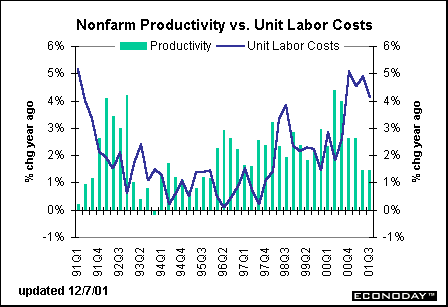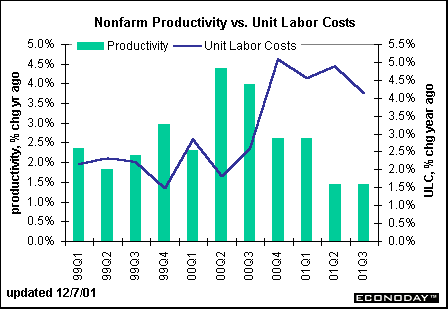 |

Long Term Perspective
While accelerating wage gains could lead to consumer price increases, it is important to look at the missing link -- productivity. Productivity gains allow wage increases without generating inflationary pressures. Note how sharp productivity increases since 1991 were associated with only modest gains in unit labor costs.

Short Term Perspective
Nonfarm productivity rose at a 1.5 percent rate in the third quarter of 2001 somewhat slower than the 2.2 percent rate posted in the previous quarter. Looking at the change from a year ago, productivity increased 1.5 percent, matching the rise posted last quarter. These figures are revised down from the Labor Department's initial report and reflect the downward revision in third quarter GDP. Nevertheless, the productivity figures remain encouraging since productivity growth is associated with dampening inflationary pressures and allowing wages to grow more rapidly. In the third quarter, unit labor costs rose at a 2.3 percent rate, less than the 2.6 percent recorded in the previous quarter. On a year-over-year basis, unit labor costs also rose less rapidly than the previous quarter. Lower labor costs mean higher profitability for corporations.

 |


Alternative Inflation Measures • Gold Prices • Employment Cost Index • Civilian Unemployment Rate

Pool of Available Labor •
Nonfarm Productivity • Treasury Yields • Stock Prices • Fed Monetary Policy Summary
|
 |